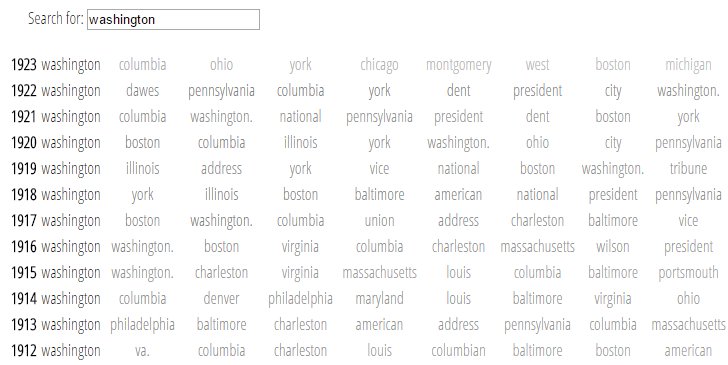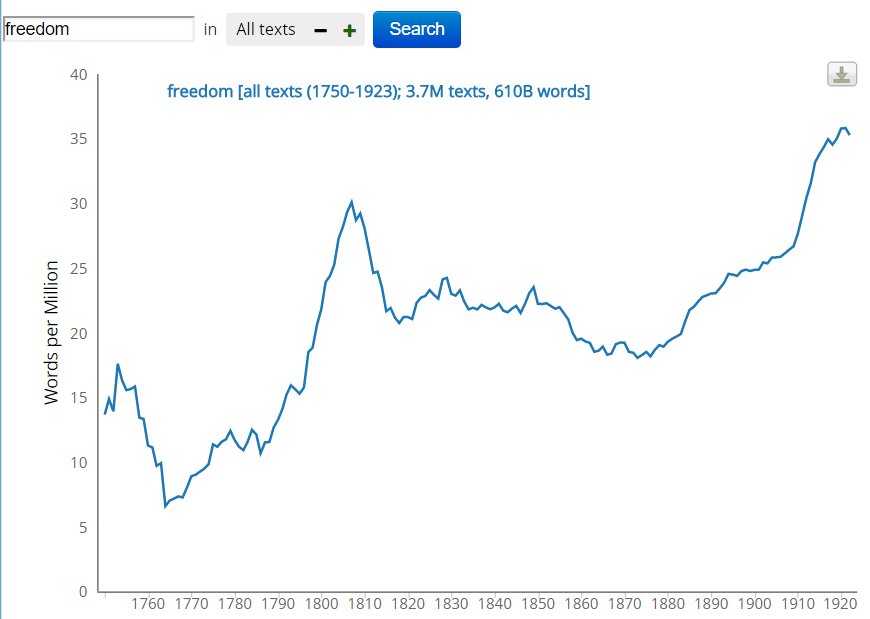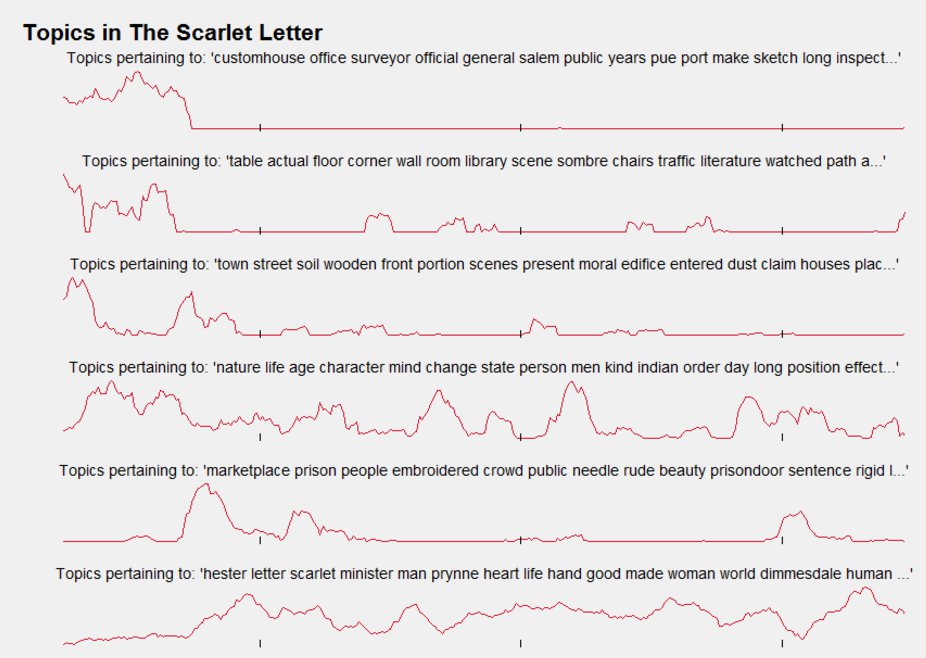Extracted Features in the Wild
See how researchers and developers are using the EF dataset in real-world projects.
Share your work
Do you have a project or tool using the HTRC Extracted Features Dataset? Let us know at htrc-help@hathitrust.org
Projects
Word Similarity Tool, David Mimno
A web-based tool for viewing similar words to a query, for each year from 1800 to 1923.
http://mimno.infosci.cornell.edu/wordsim/nearest.html?q=caste to have the queried-for word be "caste".
Here's an example of the kinds of useful observations the tool empowers you to make:
http://mimno.infosci.cornell.edu/wordsim/nearest.html?q=caste ,
you can notice a few interesting things: from the generated table for "caste", it appears that "suffering" was a pretty frequent contextual word for "caste" in the early nineteenth century, but then "suffering" seemed to drop out of the context by the late nineteenth century. On the other hand, "degradation" seemed to remain, more or less, part of the context of the word "caste" throughout. You can also notice that the occurrence of "race" in the same context as "caste" becomes more frequent after 1870 or so. Before 1870, the instances of "race" in the same context as "caste" was less pronounced.
HT+Bookworm
An interactive, faceted, visualization of terms across the HathiTrust collection, built on the EF dataset.
Here is our recent slide deck providing an overview of the HT+Bookworm project.
Within-Book Topic Modeling, Peter Organisciak
An approach for visualizing thematic trends within a book.
A Topic Model of Fiction, Jonathan Goodwin
A topic model of fiction, based on the genre-classified dataset (only 1920-22); it may be extended once extracted features are available after 1922.
Berkeley Data Science Module, Chris Hench and Cody Hennesy
A Jupyter Notebooks-based curriculum for using HTRC Extracted Features in the classroom developed at the University of California, Berkeley.
Tools
HTRC Feature Reader
A Python library that scaffolds Pandas use of EF data. With example scripts.
Tutorials and Lessons
Send us your Lessons or Tutorials related to the EF Dataset.
Python code for some simple examples of "literary sleuthing":
- Estimating the proportion of poetry-to-prose in a volume, based on the proportion of capitalized letters (Coleridge wrote a lot more prose than Keats did!)
- Making use of the incidence of a word’s occurrence to draw inferences (Little Dorrit by Charles Dickens mentions "prison" a lot more than his Bleak House does...)
- Identifying that volume in a workset in which a specified word occurs the most times (Which of the English romantic poets was the greatest "dream"-er among them all?)
Blog Posts
Underwood, Ted. June 3, 2014. "A window on the twentieth century may be about to open." The Stone and the Shell. Blog. http://tedunderwood.com/2014/06/03/a-window-on-the-twentieth-century-may-be-about-to-open/
Mimno, David. 2014. "Word counting, squared." David Mimno. Blog. http://www.mimno.org/articles/wordsim/
Forster, Chris. 2015. "A Walk Through the Metadata: Gender in the HathiTrust Dataset." (Based on genre-classified subsets.) http://cforster.com/2015/09/gender-in-hathitrust-dataset/
Underwood, Ted. 2015. "How Scholars Can Support Digital Libraries." Europeana Research. http://research.europeana.eu/blogpost/text-mining-2-how-scholars-can-support-digital-libraries




